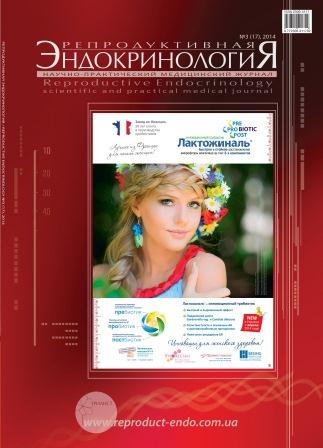Efficacy and safety of oral iron(iii) polymaltose complex versus ferrous sulfate in pregnant women with iron-deficiency anemia:a multicenter, randomized, controlled study
DOI:
https://doi.org/10.18370/2309-4117.2014.17.118-125Keywords:
anemia, deficiency, ferrous, IPC, pregnancy, pregnant, iron, sulfateAbstract
Objective: To evaluate the efficacy and safety of iron (III) polymaltose complex (Maltofer) versus ferrous sulfate in iron-deficient pregnant women using recommended doses. Methods: An exploratory, open-label, randomized, controlled, multicenter study was undertaken in 80 pregnant women with iron-deficiency anemia (hemoglobin ≤ 10,5 g/dL, serum ferritin ≤ 15 ng/mL and mean corpuscular volume < 80 fL). Patients were randomized 1:1 to oral iron(III) polymaltose complex or ferrous sulfate (each 100 mg iron twice daily) for 90 days. Results: The primary endpoint, change in hemoglobin from baseline to days 60 and 90, did not differ significantly between treatment groups. The mean change to day 90 was 2,16 (0,67) g/dL in the iron (III) polymaltose complex group and 1,93 (0,97) g/dL in the ferrous sulfate group. Mean serum ferritin at day 90 was 179 (38) ng/mL and 157 (34) ng/mL with iron (III) polymaltose complex and ferrous sulfate, respectively (p = 0,014). Adverse events were significantly less frequent in the iron (III) polymaltose group, occurring in 12/41 (29,3%) patients, than in the ferrous sulfate group (22/39 [56,4%]) (p = 0,015). Conclusions: Oral iron (III) polymaltose complex offers at least equivalent efficacy and a superior safety profile compared to ferrous sulfate for the treatment of iron-deficiency anemia during pregnancy.
References
- DeMaeyer, E. Adiels-Tegman, M. «The prevalence of anaemia in the world.» World Health Stat Q, 38(1985):302-316.
- «The prevalence of anaemia in women. A tabulation of available information.» Geneva, World Health Organization (1992) (WHO/MCH/MSM/92.2).
- Zavaleta, N. Berlanga, R. Lonnerdal, B. Brown, K.H. «Prevalence and determinants of iron deficiency anaemia in a representative sample of pregnant women in Lima, Peru. Final report presented to the Pan American Health Organization.» Washington DC: Pan American Health Organization (1993).
- Toblli, J.E. Brignoli, R. «Iron(III)-hydroxide polymaltose complex in iron deficiency anemia / review and metaanalysis.» Arzneimittelforschung, 57(2007):431-438.
- Geisser, P. Hohl, H. Muller, A. «Clinical effectiveness of three different iron preparations in pregnant women.» Schweiz Apoth Ztg,125(1987):393-398.
- Jacobs, P. Fransman, D. Coghlan, P. «Comparative bioavailability of ferric polymaltose and ferrous sulphate in irondeficient blood donors.» J Clin Apher, 8(1993):89-95.
- Geisser, P. Muller, A. «Pharmacokinetics of iron salts and ferric hydroxide-carbohydrate complexes.» Arzneimittelforschung, 37(1987):100-104.
- Dresow, B. Petersen, D. Fischer, R. Nielsen, P. «Nontransferrin-bound iron in plasma following administration of oral iron drugs.» Biometals, 21(2008):273-276.
- Tuomainen, T.P. Nyyssoonen, K. Porkkala-Sarataho, E. Salonen, R. Baumgartner, J.A. Geisser, P. Salonen, J.T. «Oral supplementation with ferrous sulfate but not with non-ionic iron polymaltose complex increases the susceptibility of plasma lipoproteins to oxidation.» Nutr Res, 19(1999):1121-1132.
- Macdougall IC. Strategies for iron supplementation: Oral versus intravenous. Kidney Int Suppl 1999;69:S61–S66.
- Chandler, G. Harchowal, J. Macdougall, I.C. «Intravenous iron sucrose: Establishing a safe dose.» Am J Kidney Dis, 38(2001):988-991.
- Jacobs, P. Wood, L. Bird, A.R. «Erythrocytes: better tolerance of iron polymaltose complex compared with ferrous Sulphate in the treatment of Anaemia.» Hematology, 5(2000):77-83.
- Saha, L. Pandhi, P. Gopalan, S. Malhotra, S. Saha, P.K. «Comparison of efficacy, tolerability, and cost of iron polymaltose complex with ferrous sulphate in the treatment of iron deficiency anemia in pregnant women.» MedGenMed, 9(2007):1.
- Hajnaczky, K. Demeter, J. Szokely, P. Udvardi, E. «Our experiences gained in the tolerability study of MaltoferR chewing tablet in the prevention and treatment of iron deficiency anemia in pregnancy.» Magyar Noorvosok Lapja, 65(2002):1-5.
- Khalafallah, A. Dennis, A. Bates, J. Bates, G. Robertson, I.K. Smith, L. Ball, M.J. et al. «A prospective randomized, controlled trial of intravenous versus oral iron for moderate iron deficiency anaemia of pregnancy.» J Intern Med, 268(2010):286-295.
- MaltoferR Prescribing Information. Vifor (International) Inc., St Gallen, Switzerland. Last updated September (2004).
- Geisser, P. «Safety and efficacy of iron(III)-hydroxide polymaltose complex / a review of over 25 years experience.» Arzneimittelforschung, 57(2007):439-452.
- Langstaff, R.J. Geisser, P. Heil, W.G. Bowdler, M.A. «Treatment of iron-deficiency anemia: A lower incidence of adverse effects with Ferrum Hausmann than ferrous sulfate.» Brit Journal of Clin Research, 4(1993):191-198.
- Kaltwasser, J.P. Werner, E. Niechzial, M. «Bioavailability and therapeutic efficacy of bivalent and trivalent iron preparations.» Arzneimittelforschung, 37(1987):122-129.
- Geisser, P. Philipp, E. «True iron bioavailability, iron pharmacokinetics and clinically silent side effects.» Nutrition, Immunity and Health, 1(2009):3-11.
- Melamed, N. Ben-Haroush, A. Kaplan, B. Yogev, Y. «Iron supplementation in pregnancy – does the preparation matter?» Arch Gynecol Obstet, 276(2007):601-604.
- Schmidt, B.J. Morais, M.B. Fisberg, M. Martins, A. Machado, N.L. «Therapeutic comparison between ferrous sulfate and trivalent iron, in form of polymaltosed ferric hydroxide complex, in treatment of iron deficiency.» Folha Med, 90(1985):225-229.
- Macgregor, M.W. «Maternal anaemia as a factor in prematurity and perinatal mortality.» Scottish Medical Journal, 8(1963):134.
- Schorr, T.O. Hediger, M.L. «Anemia and iron-deficiency anemia: Compilation of data on pregnancy outcome.» Am J Clin Nutr, 59(1994): 492S-501S.
- Allen, L.H. «Anaemia and iron deficiency: Effects on pregnancy outcome.» Am J Clin Nutr, 71(2000):1280S-1284S.
Downloads
Published
How to Cite
Issue
Section
License
Copyright (c) 2014 Ricardo Ortiz, Jorge Eduardo Toblli, Juan Diego Romero, Beatriz Monterrosa, Cristina Frer, Eugenia Macagno, Christian Breymann

This work is licensed under a Creative Commons Attribution 4.0 International License.
Authors who publish with this journal agree to the following terms:
- Authors retain copyright and grant the journal right of first publication with the work simultaneously licensed under a Creative Commons Attribution License that allows others to share the work with an acknowledgement of the work's authorship and initial publication in this journal.
- Authors are able to enter into separate, additional contractual arrangements for the non-exclusive distribution of the journal's published version of the work (e.g., post it to an institutional repository or publish it in a book), with an acknowledgement of its initial publication in this journal.







